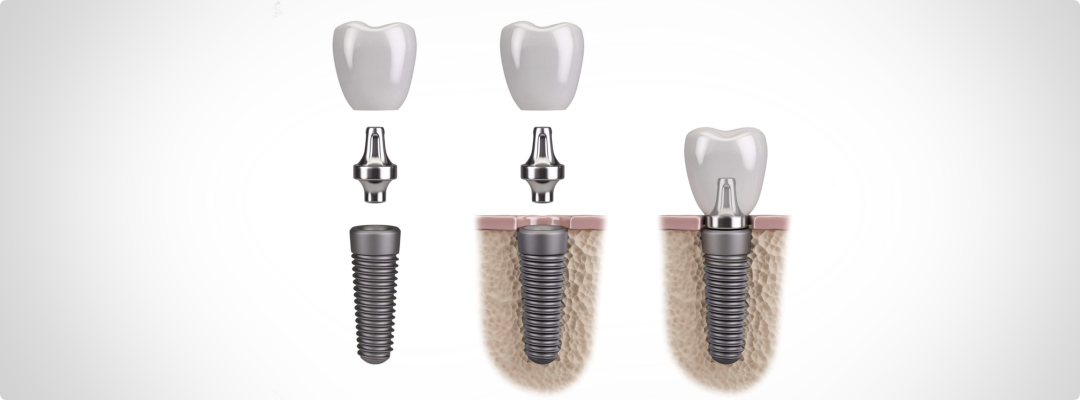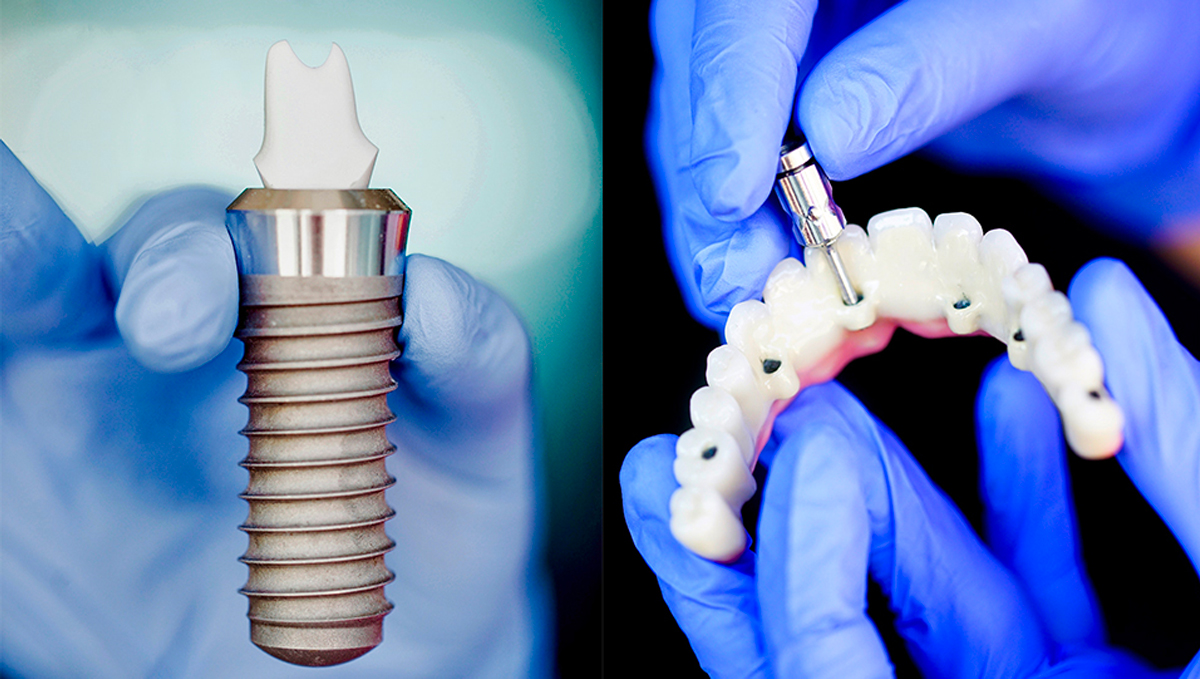Many people are convinced that an implant, or as dentists say, an implant, is a pre-made prosthetic tooth with a root. But this is not entirely true. Implantation is not an easy process, but the result is worth it. It is by far the most effective way to restore lost teeth.
So, let’s understand what is called an implant, what are the advantages of restoring teeth by implantation, how it takes place and what kinds of implants there are.
It is very simple: an implant is a tooth root substitute, which later serves as a strong support for a dental prosthesis (crown or structure). It is made of biocompatible titanium alloy and has a special coating, thanks to which it fuses securely with the bone tissue of the jaw.
Advantages of implant placement:
- In terms of feel, function, and aesthetics, the implant crown fully replaces the tooth
- The implant lasts for many years, even a lifetime.
- You will regain the comfort you lost when eating and smiling.
- Bone tissue in the jaw will be preserved due to proper loading.
- Healthy teeth do not need to be ground down for dentures.
What implants are available
Implants are produced in many countries: in Israel (“Alpha Bio”), Korea (Dentium), Sweden (“Nobel”, Astra Tech), Germany (Ankulos). There is a wide range of sizes and designs. What kind of implant you need exactly, the examination will show. The doctor will definitely recommend the best option.
What implants we most often recommend:
- “Nobel”. Swedish luxury systems are characterized by reliability and quality, proven over the years. The manufacturing company provides a lifetime warranty on them.
- “Alpha Bio”. Popular premium implants from Israel are excellent in rooting. They also have a lifetime warranty from the manufacturer.
- Dentium. Korean implants have double threads and a specially treated surface for successful engraftment. This is the best option among budget implants.

What is needed for implantation
The main condition is a sufficient volume of bone tissue of the jaw. The fact is that when you lose a tooth, the bone begins to shrink. By this property, it is very similar to muscles, which weaken and atrophy without loads. If the size of the bone is too small, an implant cannot be placed. In such a case, bone augmentation surgery – bone grafting or sinus lift – is performed.
Types of implantation:
- Classic
The 3-stage method is used if there is not enough bone tissue to install an implant. Bone grafting is performed first. The period of bone restoration is 6-8 months. The next step is the installation of the implant, which takes about six months to take root. At the last stage, the gingival contour is formed and a permanent crown is placed - One-stage
The most preferred type of implantation. The implant is placed immediately after a gentle tooth extraction. Grafting is several months faster than with classical implantation. A temporary crown can be immediately placed on the implant, which is then replaced with a permanent crown. - “All on four”
This type of implantation is used if the entire tooth row needs to be restored. In one operation, 4 implants are placed at once: two implants are placed straight and two implants are placed at an angle of 45 degrees. A removable denture is immediately attached to them. This operation is possible even with significant bone atrophy: the most suitable areas of the jaw for fixing the implants are simply selected

How the operation is performed
Implantation is possible under local anesthesia and with the use of sedation, that is, in sleep. The doctor makes a careful incision on the gum. Then he forms a bone bed for the implant. The implant is fixed in the bone, and the gum is sutured. The surgery lasts no more than an hour.




